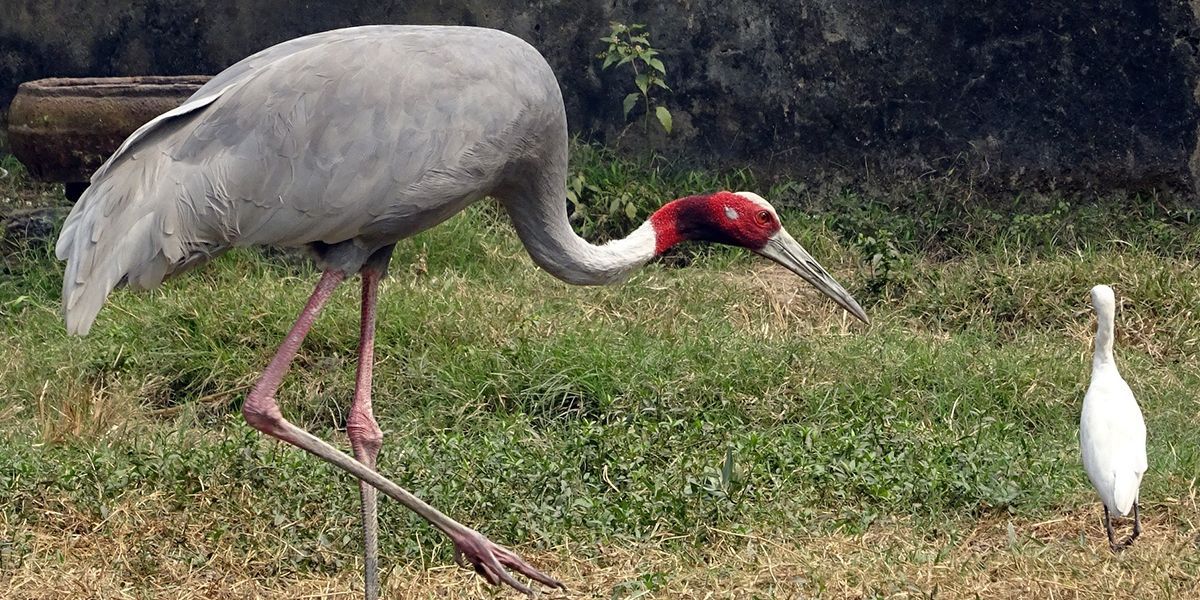Indian Sarus Crane
This large bird is native to the Indian sub-continent, Southeast Asia and Australia. Present populations are greatly reduced in numbers and range from their historic maximums. The largest numbers are in India.
It is easily recognized by its grey colour and distinctive red head and upper neck. Individuals stand up to 180 cm (6 ft.) tall. The Sarus Crane inhabits wetlands and eats roots, tubers, insects, crustaceans and small vertebrates.
Males and females form long lasting pair bonds and maintain territories. During the breeding season they build nest islands of grass and reeds up to 2 metres across.
It is easily recognized by its grey colour and distinctive red head and upper neck. Individuals stand up to 180 cm (6 ft.) tall. The Sarus Crane inhabits wetlands and eats roots, tubers, insects, crustaceans and small vertebrates.
Males and females form long lasting pair bonds and maintain territories. During the breeding season they build nest islands of grass and reeds up to 2 metres across.
Fun Facts
They are thought to be extinct now in the Philippines and Thailand.

scientific classification
Kingdom
Animalia
Phylum
Chordata
Class
Aves
Order
Gruformes
Family
Gruidaqe
Genus
Antigone
Species
A. antigone
Where to find us
There is one female Indian Sarus Crane living at Safari Niagara named Uno.
did you know?
Unlike other cranes these birds are largely non-migratory.
The only migratory population is in Australia.
In 2009 there were 15 – 20 thousand Sarus Cranes left in the wild.



